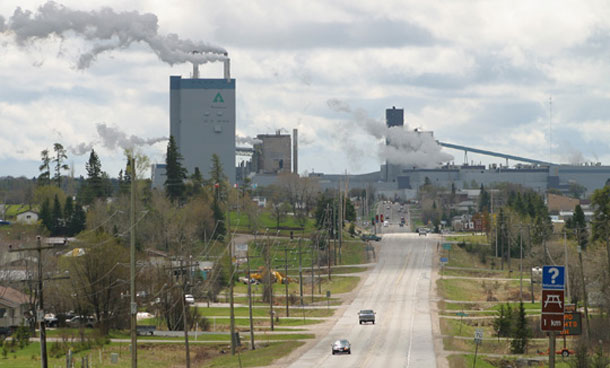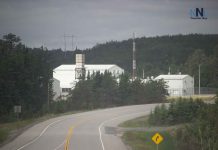
Toronto – Last summer Kas Glowaki, a former Dryden mill worker, made a shocking confession. In an email letter Glowaki wrote that his conscience forced him to admit to participating in the shallow burial of 50 barrels of salt and highly toxic liquid mercury in a pit behind the Dryden mill in 1972 upstream from Grassy Narrows First Nation. When the former Grassy Narrows chief forwarded the letter to Ontario government officials over six months ago they responded by assuring him that the infamous Dryden pulp mill “is not a source of mercury.”
The Grassy Narrows First Nation, in a media statement says, “Today, a Toronto Star investigation exposed that Ontario has neglected to clean up, or even locate, Glowaki’s reported mercury poison dump. Ontario officials admitted to the Toronto Star that they had not tested mercury levels in Wabigoon River water since 1980 – the one test that could confirm whether the old mill site is leaking mercury poison”.
“I am shocked and dismayed by Ontario’s failure to protect our people who live downstream from this reported toxic mercury dump,” said current Chief Simon Fobister Sr. “Premier Wynne and her government must respond decisively and clean this mess. It is time to clean our river once and for all.”
The toxic waste Glowaki reports burying is enough to raise mercury levels in the Wabigoon River by ten-fold for 90 years if it reaches the river. Glowaki told the Star that the barrels were dropped in a dirt pit lined with plastic on a hill behind the mill approximately a kilometer away from the official mercury waste disposal site.
An expert report released two weeks ago found that persistently high levels of mercury in Clay Lake sediment and fish on the Wabigoon River suggest that there is an ongoing source of mercury upstream which could be the old mill site.
“It is my hope and dream that our river will flow with life again so that our people can rebuild our way of life and our health that was taken from us by mercury,” said Grassy Narrows environmental health coordinator and grandmother Judy Da Silva. “We call on the government to clean our river without delay so that no more Grassy Narrows children will be robbed of a bright future by the poison that has been left in our river.”
In the 1960s, the same Dryden mill was allowed to dump 9,000 kg of mercury into Grassy Narrows’ English and Wabigoon river system. The government has not taken any action to clean up the river. Mercury is a potent neuro-toxin that accumulates in the food chain and causes life-long harm to the brains of people who eat contaminated fish, especially babies and children.
Grassy Narrows people, including children, continue to be diagnosed with the life-altering symptoms of mercury poisoning more than 50 years after the Dryden mill began dumping untreated mercury waste into the Wabigoon River. Fishing is a central part of Grassy Narrows’ culture and has provided sustenance, livelihood, and meaning for countless generations of Grassy Narrows people. The collapse of fishing as a result of mercury poisoning has created massive unemployment in the community. Social services are underfunded and youth suicides are on the rise adding to the generations of government and corporate injustice committed against this formerly self-sufficient and healthy Indigenous nation.
Ongoing losses of mercury from the former mill site have not been estimated since the 1970s – 1980s. The recent report found that current monitoring at the old mill site is not sufficient to tell whether the site is an ongoing source of mercury to the river.
More than 30 years ago an extensive joint federal-provincial scientific panel recommended that the river should be cleaned up, and could be cleaned safely. Not only did the governments of the day not implement the report, subsequent governments to this day have misrepresented the situation, saying the river could not be cleaned up
The First Nation asserts, “The recent expert report found that Grassy Narrows’ river is still highly contaminated and dangerous, but that it can be cleaned up safely. The government of Ontario first responded saying that “[c]urrently there is no evidence to suggest that mercury levels in the river system are such that any remediation, beyond continuing natural recovery is warranted or advisable.”
Grassy Narrows states, “Under intense pressure Wynne backtracked, finally saying in the legislature that ‘[w]e are going to continue to work with the community to find a solution’. Minister Murray went further saying to CBC that ‘[t]he case has been made and the evidence has been presented that it is time for remediation and a need for action, which I accept….The situation is really unacceptable and I am committed to acting quickly to resolve it… The time now is not to continue to study the problem’.
However, neither Ontario nor Canada have committed clearly to cleaning up Grassy Narrows’ river without delay. Premier Wynne continues to deny that the river can be cleaned safely – something clearly contradicted by the expert reports.
“The shocking revelations reported by the Toronto Star today are one more example of how Ontario has repeatedly chosen to ignore the health and well-being of the people of Grassy Narrows,” said Craig Benjamin of Amnesty International. “Having allowed the contamination of the river system in the 1960s, the province has a clear obligation to do everything in its power to set things right and ensure that no further harm is done. Instead, Ontario failed to carry out even the one simple test that would have determined whether the contaminated site poses a continued threat to the river. Even after receiving an alarming account of toxic dumping, the province has once again failed to act. This begs the questions: do the lives of the people of Grassy Narrows matter to the provincial government?”
It is common for former chemical plants to continue leaking mercury decades after they have been closed (for example, HoltraChem-Penobscot River MA; ALCOA-Lavaca Bay TX; Squamish BC). At some locations new measure have been put in place to reduce ongoing leaks. These have been successful.





